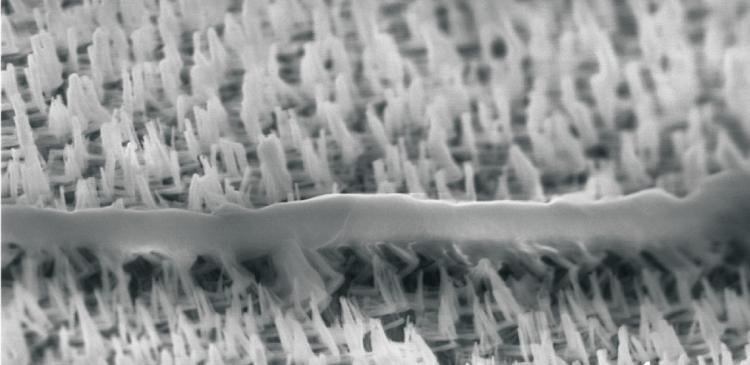Neural stem cells become functional when placed on the nanomatrix.
Researchers at Hong Kong Baptist University (HKBU) (HKBU) have invented a device with a nanolayer of biomaterials that ‘massages’ neural stem cells, encouraging them to proliferate and specifically differentiate. The approach minimizes the use of growth factors in a culture medium, which can lead to tumour growth when transplanted into humans.
“Stem cell therapies have shown great promise in treating neurodegenerative diseases,” explains HKBU neurobiologist Ken Kin-Lam Yung. “They involve the use of stem cells to cultivate healthy cells, tissues or organs that are transplanted into people to replace damaged or dead cells and restore physiological function.”
But currently employed methods for promoting proliferation and differentiation of neural stem cells involve the use of compounds that can lead to tumour development once the cells are transplanted into humans, he says.
The nanolayer included in the new device physically massages neural stem cells that are in contact with it. The physical contact stimulates a specific signalling pathway that causes the neural stem cells to differentiate into targeted functional neurons, explains HKBU materials scientist Zhifeng Huang, who led the study together with Yung.
“This ‘physical massage’ resembles the Chinese medicine acupuncture technique, causing the cells to differentiate into functional cells that are in urgent demand in cell replacement therapies for the treatment of neurodegenerative diseases, cancers and tumours,” Huang says. “This physical massage minimises the need for growth factors and should substantially reduce the risk of carcinogenesis in clinical trials.”
The invention won the team the Gold Medal with Congratulations of Jury at the 46th International Exhibition of Inventions of Geneva held in Switzerland in April 2018. A US patent for the device has been filed.
The team has established a spin-off company, called Mat-A-Cell Limited, to manufacture and distribute the device to research institutions and companies developing cell therapies.
For further information, contact:
Professor Ken Kin-Lam Yung | E-mail: [email protected]
Department of Biology
Hong Kong Baptist University (HKBU)
Dr Zhifeng Huang | E-mail: [email protected]
Department of Physics
Hong Kong Baptist University (HKBU)




